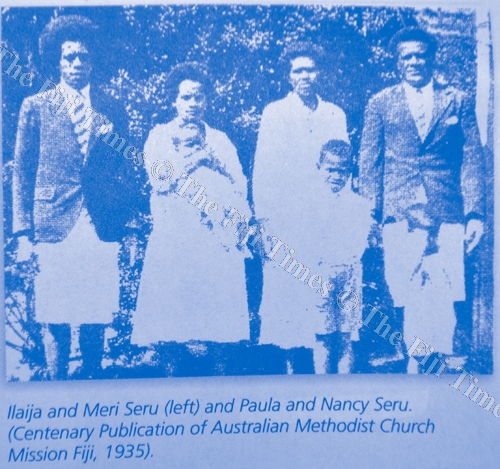THE LATE Fijian missionaries who served in North Australia in 1929, encountered major obstacles and challenges in the course of their mission work, however, this did not deter them from achieving their mission – that the people of Arnhem Land understood the importance of serving the Lord.
This was highlighted in the book titled ‘Fijian Missionaries in North Australia’ written by John Kadiba, which was also the first comprehensive account of the Fijian missionaries who worked in North Australia.
The book was written by Mr Kadiba originally of Port Moresby, Papua New Guinea, so that the Fijian missionaries work could always be remembered. Two of the pioneer Fijian missionaries were the late Paula Seru and Ilajia Seru.
The Methodist mission field in North Australia was unique in comparison to other areas in Papua New Guinea and the Solomon Islands.
Many of the complex issues and difficulties Fijians faced in Arnhem Land were due to the distinctiveness of the mission field and other unexpected developments which they confronted in the course of their missionary career.
Mr Kadiba highlighted in the book that in the pioneer days, all missionaries, Fijian and European, experienced similar hardships of isolation and loneliness which resulted from lack of communication with the outside world in the frontier work in the remote and untamed region of North Australia.
All missionaries suffered privation and the stress and strain of the mission field took its toll and many missionaries experienced a breakdown in health.
Working under normal conditions in Arnhem Land was arduous enough.
However, the situation was exacerbated by the coming of the World War II and for the few missionaries along the north coast, their tasks were even more challenging. In this unique mission field, Fijian further experienced difficulties which were peculiar to themselves.
There were disparities in the living conditions between the Fijians and their European counterparts. Initially, the Fijians built their own houses in Fijian style, using the bush material.
Subsequently, substandard permanent accommodation was provided for them.
Some improvements were made after the war. Stipends of all missionaries, compared both to today’s standards and the standards of the time, were meagre.
The Fijians, however, were paid less than the European missionaries.
It was only in 1970, that the MOM board in Sydney recommended equal pay for Pacific Islanders and Europeans.
Furthermore, working in a complex cross- cultural environment, compounded the hardships of the Fijians.
Sometimes, they experienced cross-cultural misunderstanding and for some communicating in English, as one Fijian missionary later reminisced, was a cause of utter frustration.
“Furthermore, they experienced condescending, paternalistic and racist treatment from some European missionaries and visiting government officials,” Mr Kadiba highlighted in the book.
“Most of the time, these were silent, unconscious in-built attitudes of the Europeans, but they were sometimes acted out overtly. “The Fijians work and contribution were not always acknowledged.”
Some of the difficulties the Fijians experienced emanated from their unfamiliarity with official protocols.
In the 1970s and 1980s, a few Fijians became articulate and assertive and this often put them at odds with some European missionaries, the church and government officials.
Against all odds, the Fijian missionaries rendered dedicated and sacrificial services to the Methodist mission and the church in North Australia and contributed indirectly to the development of the Northern Territory.




